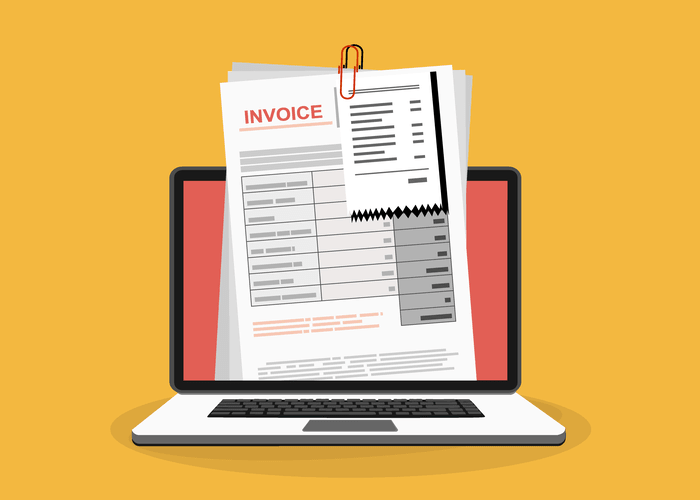
LIFO is banned by International Financial Reporting Standards (IFRS), a set of common rules for accountants who work across international borders. While many nations have adopted IFRS, the United States still operates under the guidelines of generally accepted accounting principles (GAAP). If the United States were to ban LIFO, the country would clear an obstacle to adopting IFRS, thus streamlining accounting for global corporations. So ultimately, the benefit of using the FIFO method for a company is that it can report a higher value of shareholders’ equity or net worth and hence appear more attractive to the investors. On the other hand, a company that uses the LIFO method will be reporting a lower value of net worth and hence will appear comparatively less attractive to the investors. It ensures that the oldest stock is sold first, reducing the risk of obsolescence.
- This article will cover how to determine ending inventory by LIFO after selling in contrast to the FIFO method, which you can discover in Omni’s FIFO calculator.
- Get instant access to video lessons taught by experienced investment bankers.
- You also need to understand the regulatory and tax issues related to inventory valuation.FIFO is the more straightforward method to use, and most businesses stick with the FIFO method.
- Here is a high-level summary of the pros and cons of each inventory method.
- In other words, the beginning inventory was 4,000 units for the period.
Tax Implications and Profit Reporting
- Furthermore, when USA companies have operations outside their country of origin, they present a section where the overseas inventory registered by FIFO is modified to LIFO.
- For example, let’s say that a bakery produces 200 loaves of bread on Monday at a cost of $1 each, and 200 more on Tuesday at $1.25 each.
- Once you understand what FIFO is and what it means for your business, it’s crucial to learn how it works.
- Logistically, that grocery store is more likely to try to sell slightly older bananas as opposed to the most recently delivered.
- For example, those companies that sell goods that frequently increase in price might use LIFO to achieve a reduction in taxes owed.
- The best POS systems will include inventory tracking and inventory valuation features, making it easy for business owners and managers to choose between LIFO and FIFO and use their chosen method.
- The type of inventory that a business holds can influence its choice of FIFO or LIFO.
Generally speaking, FIFO is preferable lifo formula in times of rising prices, so that the costs recorded are low, and income is higher. Contrarily, LIFO is preferable in economic climates when tax rates are high because the costs assigned will be higher and income will be lower. In periods of deflation, LIFO creates lower costs and increases net income, which also increases taxable income. Companies with perishable goods or items heavily subject to obsolescence are more likely to use LIFO.
LIFO Calculator for Inventory

The simplicity of the average cost method is one of its main benefits. It takes less time and labor to implement an average cost method, thereby reducing company costs. The method works best for companies that sell large numbers of relatively similar products. With FIFO, it is assumed that the $5 per unit hats remaining were sold first, followed by the $6 per unit hats. Dollar-cost averaging involves averaging the amount a company spent to manufacture or acquire each existing item in the firm’s inventory.

Average Cost Method
When you compare the cost of goods sold using the LIFO calculator, you see that COGS increases when the prices of acquired items rise. Such a situation will reduce the profits on which the company pays taxes. LIFO stands for last-in, first-out, and it’s an accounting method for retained earnings balance sheet measuring the COGS (costs of goods sold) based on inventory prices. The particularity of the LIFO method is that it takes into account the price of the last acquired items whenever you sell stock.
For example, using the https://www.bookstime.com/ same purchase scenario as before, LIFO would assign the $12 cost to the first 100 units sold. The older inventory, purchased at $10, remains in stock, potentially distorting its value on the balance sheet. For example, if you purchased 100 units at $10 each and then another 100 units at $12 each, FIFO would assign the $10 cost to the first 100 units sold. The remaining inventory items would be valued at $12 per unit, reflecting the more recent purchase price. This results in a clear, up-to-date picture of inventory value on your balance sheet. FIFO aligns with the natural flow of goods, making it a logical choice for many businesses.
Last In, First Out (LIFO): The Inventory Cost Method Explained
When the company calculates its profits, it would use the most recent price of $35. In tax statements, it would appear that the company made a profit of only $15. FIFO assumes that assets with the oldest costs are included in the income statement’s Cost of Goods Sold (COGS). The remaining inventory assets are matched to assets that were most recently purchased or produced. The value of COGS calculated using the FIFO method was $ 1750, while that calculated using the LIFO method was $ 2750.
Tax Savings and Financial Flexibility
- Goods available for sale totals 250 gloves, and the gloves are either sold (added to cost of goods sold) or remain in ending inventory.
- As inventory is sold, the basis for those items is assumed to be the average inventory cost at the time of their sale.
- The FIFO and LIFO methods impact your inventory costs, profit, and your tax liability.
- With this method, companies add up the total cost of goods purchased or produced during a specified time.
- Therefore the first batch of inventory that they order is also the first to be disposed of, leading to a steady inventory turnover.
- Some companies believe repealing LIFO would result in a tax increase for both large and small businesses, though many other companies use FIFO with few financial repercussions.
This can result in substantial tax savings, improving cash flow and offering more financial flexibility. By contrast, the inventory purchased in more recent periods is cheaper than those purchased earlier (i.e. older inventory costs are more expensive). LIFO is banned under the International Financial Reporting Standards that are used by most of the world because it minimizes taxable income. That only occurs when inflation is a factor, but governments still don’t like it. In addition, there is the risk that the earnings of a company that is being liquidated can be artificially inflated by the use of LIFO accounting in previous years.
- If the United States were to ban LIFO, the country would clear an obstacle to adopting IFRS, thus streamlining accounting for global corporations.
- Companies have their choice between several different accounting inventory methods, though there are restrictions regarding IFRS.
- The FIFO vs. LIFO accounting decision matters because of the fact that inventory cost recognition directly impacts a company’s current period cost of goods sold (COGS) and net income.
- Two hundred fifty shirts are purchased, and 120 are sold, leaving 130 units in ending inventory.
- If LIFO is used, only old inventory will remain in stock, and its purchase price will have a lesser chance of going below its carrying value.
- Grocery store stock is a common example of using FIFO practices in real life.
- A company’s taxable income, net income, and balance sheet balances will all vary based on the inventory method selected.
Multi-Location Inventory Management: Best Practices & Guide
Therefore, we convert LIFO Inventory into FIFO inventory by using this reserve to make them comparable. Specific inventory tracing is only used when all components attributable to a finished product are known. But since inflation is a reality, the inventory value comes out to be something when we use FIFO, and it comes out to be something else when we use LIFO.


In addition, many companies will state that they use the « lower of cost or market » when valuing inventory. This means that if inventory values were to plummet, their valuations would represent the market value (or replacement cost) instead of LIFO, FIFO, or average cost. Since LIFO uses the most recently acquired inventory to value COGS, the leftover inventory might be extremely old or obsolete. As a result, LIFO doesn’t provide an accurate or up-to-date value of inventory because the valuation is much lower than inventory items at today’s prices. Also, LIFO is not realistic for many companies because they would not leave their older inventory sitting idle in stock while using the most recently acquired inventory.
